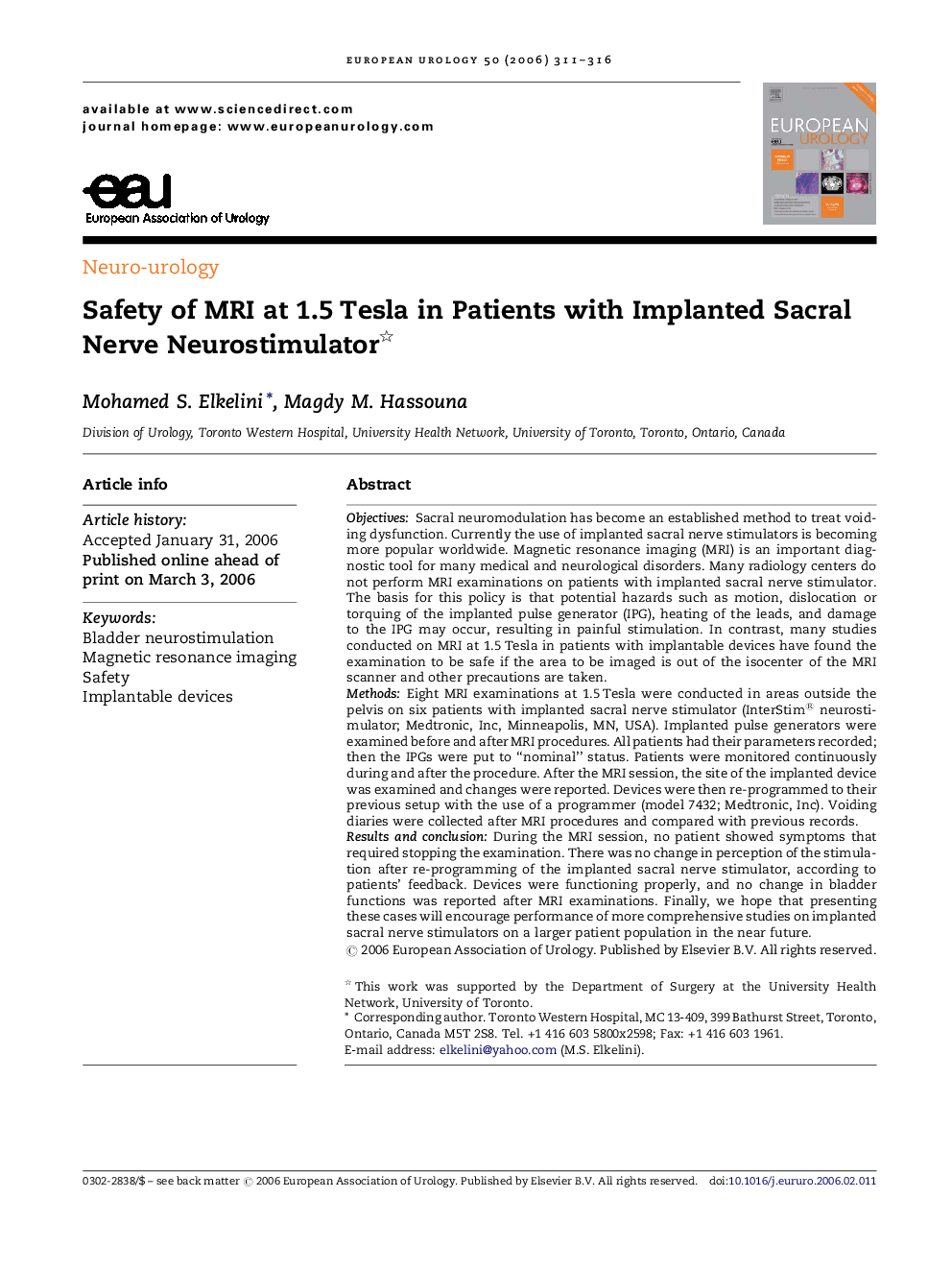| کد مقاله | کد نشریه | سال انتشار | مقاله انگلیسی | نسخه تمام متن |
|---|---|---|---|---|
| 3929057 | 1253215 | 2006 | 6 صفحه PDF | دانلود رایگان |

ObjectivesSacral neuromodulation has become an established method to treat voiding dysfunction. Currently the use of implanted sacral nerve stimulators is becoming more popular worldwide. Magnetic resonance imaging (MRI) is an important diagnostic tool for many medical and neurological disorders. Many radiology centers do not perform MRI examinations on patients with implanted sacral nerve stimulator. The basis for this policy is that potential hazards such as motion, dislocation or torquing of the implanted pulse generator (IPG), heating of the leads, and damage to the IPG may occur, resulting in painful stimulation. In contrast, many studies conducted on MRI at 1.5 Tesla in patients with implantable devices have found the examination to be safe if the area to be imaged is out of the isocenter of the MRI scanner and other precautions are taken.MethodsEight MRI examinations at 1.5 Tesla were conducted in areas outside the pelvis on six patients with implanted sacral nerve stimulator (InterStim® neurostimulator; Medtronic, Inc, Minneapolis, MN, USA). Implanted pulse generators were examined before and after MRI procedures. All patients had their parameters recorded; then the IPGs were put to “nominal” status. Patients were monitored continuously during and after the procedure. After the MRI session, the site of the implanted device was examined and changes were reported. Devices were then re-programmed to their previous setup with the use of a programmer (model 7432; Medtronic, Inc). Voiding diaries were collected after MRI procedures and compared with previous records.Results and conclusionDuring the MRI session, no patient showed symptoms that required stopping the examination. There was no change in perception of the stimulation after re-programming of the implanted sacral nerve stimulator, according to patients’ feedback. Devices were functioning properly, and no change in bladder functions was reported after MRI examinations. Finally, we hope that presenting these cases will encourage performance of more comprehensive studies on implanted sacral nerve stimulators on a larger patient population in the near future.
Journal: European Urology - Volume 50, Issue 2, August 2006, Pages 311–316